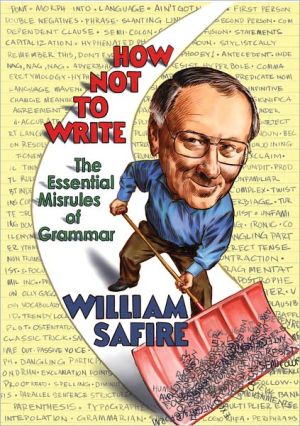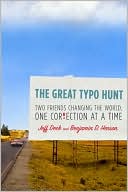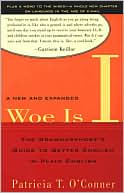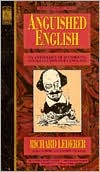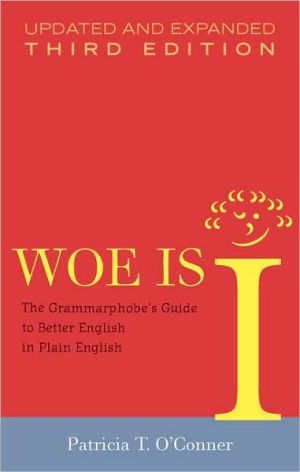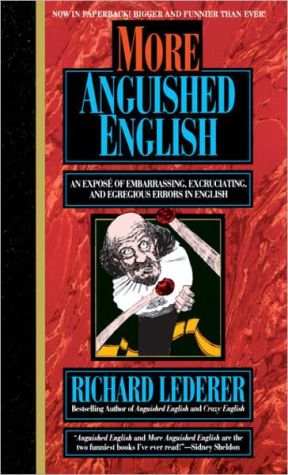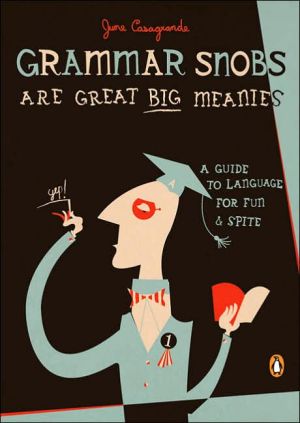How Not to Write: The Essential Misrules of Grammar
These fifty humorous misrules of grammar will open the eyes of writers of all levels to fine style.\ How Not to Write is a wickedly witty book about grammar, usage, and style. William Safire, the author of the New York Times Magazine column "On Language," homes in on the "essential misrules of grammar," those mistakes that call attention to the major rules and regulations of writing. He tells you the correct way to write and then tells you when it is all right to break the rules. In this...
Search in google:
These fifty humorous misrules of grammar will open the eyes of writers of all levels to fine style. Publishers Weekly There are only so many ways to denounce the double negative, and Safire hasn't discovered a new one. This slim style guide rehashes that not uncommon mistake along with 49 other equally obvious bloopers, which Safire boils down to short phrases that both illustrate and encapsulate the rule; e.g., "no sentence fragments" and "don't use contractions." Much of the text feels recycled from Safire's weekly "On Language" columns in the New York Times Magazine. A section on onomatopoeia, for example, is little more than an excuse to recount the origins of "zap." Even with such meager content, the book is repetitious, attacking more than once "the pretentious use of dead words" and outdated slang, colloquialisms and dialect. Some passages, like an account of the debate over using "he" as a universal pronoun, are long past their sell-by date. That's probably the biggest problem with this would-be stylebook: the language mavens who are Safire's core audience will find it all overfamiliar, while graduating high school students, into whose hands the book will certainly fall, may regard the author's humor as terminally unhip. Strunk and White's no-nonsense Elements of Style remains the young writer's best bet. (July) Copyright 2005 Reed Business Information.
\ From Barnes & NobleNot since Mark Twain's "Fenimore Cooper's Literary Offenses" has there been such an entertaining tongue-in-cheek guide to writing badly. Pulitzer Prize winner William Safire's How Not to Write teaches by misdirection. By instructing readers how to construct sentence rife with double negatives, dangling participles, and faulty grammar, he sets them on the path to do better.\ \ \ \ \ Publishers WeeklyThere are only so many ways to denounce the double negative, and Safire hasn't discovered a new one. This slim style guide rehashes that not uncommon mistake along with 49 other equally obvious bloopers, which Safire boils down to short phrases that both illustrate and encapsulate the rule; e.g., "no sentence fragments" and "don't use contractions." Much of the text feels recycled from Safire's weekly "On Language" columns in the New York Times Magazine. A section on onomatopoeia, for example, is little more than an excuse to recount the origins of "zap." Even with such meager content, the book is repetitious, attacking more than once "the pretentious use of dead words" and outdated slang, colloquialisms and dialect. Some passages, like an account of the debate over using "he" as a universal pronoun, are long past their sell-by date. That's probably the biggest problem with this would-be stylebook: the language mavens who are Safire's core audience will find it all overfamiliar, while graduating high school students, into whose hands the book will certainly fall, may regard the author's humor as terminally unhip. Strunk and White's no-nonsense Elements of Style remains the young writer's best bet. (July) Copyright 2005 Reed Business Information.\ \ \ America's most popular language maven preaches 50 zippy sermonettes on grammatical truisms so often misunderstood that even he seems to get them wrong. "1. No sentence fragments," begins Safire (No Uncertain Terms, 2003, etc.), establishing the self-contradictory pattern for each of the "fumblerules"-laws of highly variable authority set forth in terms that call attention to the lessons they teach by gleefully breaking them-he's culled from readers of his weekly "On Language" column for the New York Times Magazine and his own copious and often cantankerous experience. Purists will be happy to learn that Safire takes a zero-tolerance approach to dangling participles (Rule 25); more permissive writers will be relieved to know that he allows split infinitives (Rule 41) and prepositions at the end of sentences (Rule 49) under the proper conditions; editors and schoolteachers will nod in weary sympathy at Rule 33: "Of all the statements about indefinite pronouns, none is useful." Whether he's inveighing against subject-verb disagreements (Rule 12) or urging, "Don't use contractions in formal writing" (Rule 5), Safire is invariably shrewd, witty and provocative. The one constituency likely to be disappointed by his sparklingly matter-of-fact approach to the tired but important rules of writing is readers most in need of grammatical help, for Safire's ready facetiousness throughout both his fumblerules and his glosses often obscures the difference between the rules he actually endorses ("11. Write all adverbial forms correct") and mere circumlocutions or canards ("38. One will not have needed the future perfect tense in one's entire life"). The target audience throughout is writers who alreadyhave a pretty good idea how to write and are looking for practical advice about how to mess up. Anyone who already values grammar, arguments about rules or the checkered glories of verbal style, however, is in for a treat.\ \
